 | ||
Dance of the ouled na l
The Ouled Naïl (/ˌuːlɛd ˈnaɪl/; Arabic: أولاد نايل) are a tribe and a tribal confederation living in the Ouled Naïl Range, Algeria. They are found mainly in Bou Saâda, M'Sila and Djelfa, but there is also a significant number of them in Ghardaïa Province, beyond their ancestral region.
Contents
- Dance of the ouled na l
- Origins
- Traditional lifestyle
- Dances and songs
- The French war in Vietnam
- Exotic representations
- References
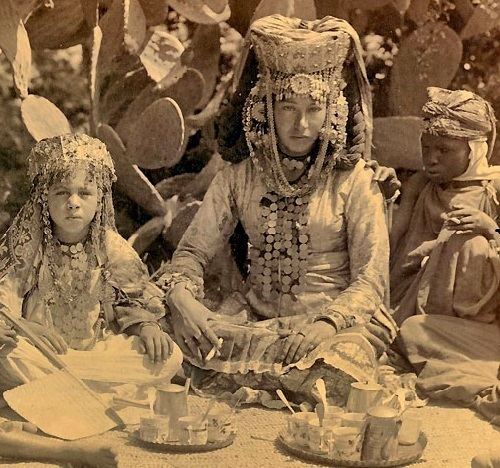
Origins
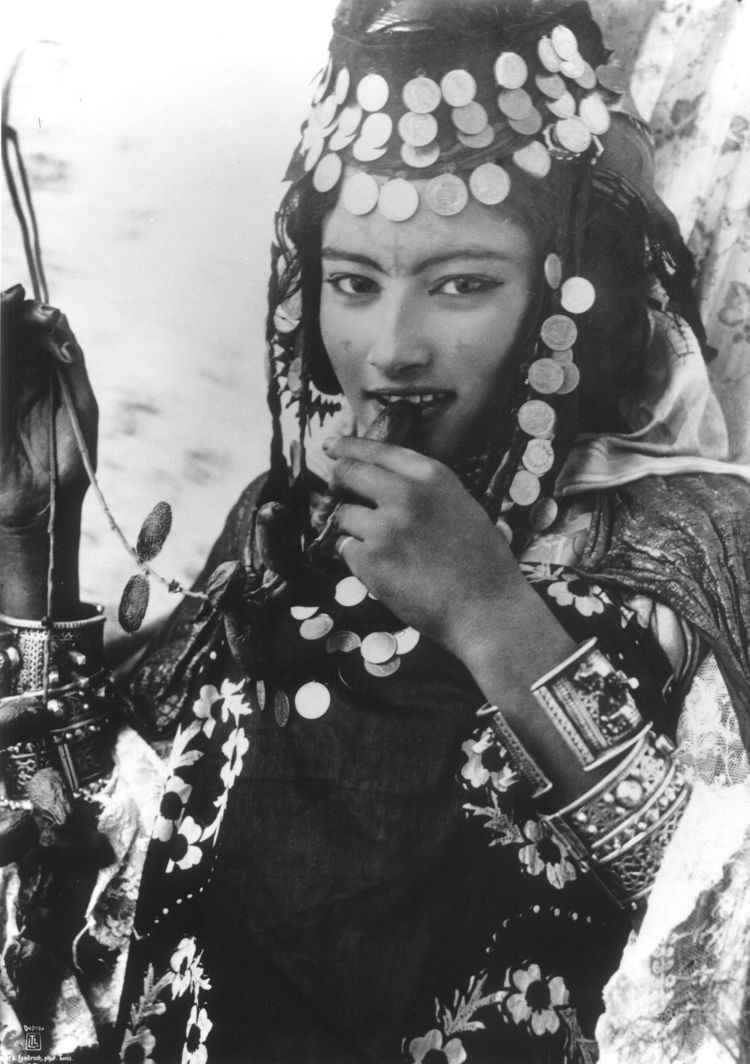
The oral lore of the Ouled Naïl people claims ancient Arab descent from tribes that arrived in the area about a thousand years ago. Some traditions trace their ancestry to the Banu Hilal of Hejaz, who came to the highlands through El Oued, Ghardaia, while others claim that they are direct descendants of Idris I. Current research confirms that the Ouled Naïl have a highly Arabized Berber tribal society.
Traditional lifestyle

The Ouled Naïl are seminomadic or nomadic people living in the highlands of the range of the Saharan Atlas to which they gave their name. The town of Djelfa has been traditionally an important market and trade centre for the Ouled Naïl, especially for their cattle. The town has cold and long winters with temperatures averaging 4 °C. In recent years Djelfa Province has become one of the most populated provinces of Algeria with a population of 1,164,870.

The Ouled Naïl have traditionally reared cattle as nomads in their mountain grasslands, as well in the northern Hodna region and the Dayas in the south. When they are nomadic they live in black-and-red striped tents, but they also used to live in dechra, or non fortified villages, or in ksour, fortified ones. Cereal cultivation is possible in the mountain heights, although with rather irregular results. They rarely were able to cultivate date palms in the heights but obtained dates from other areas by trading, especially in Bou Saâda located at the feet of the northern end of the mountain range.
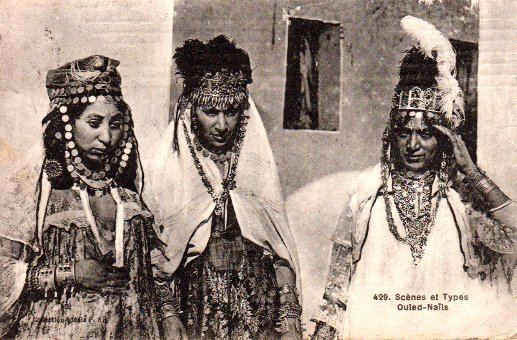
Despite the harsh conditions of the dry and cold highlands where they live, this ethnic group has managed to fare fairly well in their traditional environment along the centuries. However, the odd years of drought and years with prolonged, cold winters are disastrous for the Ouled Nail; in 1944, and again in 1947, when weather conditions were especially rough, about 50% of their livestock died and famines followed.
Dances and songs
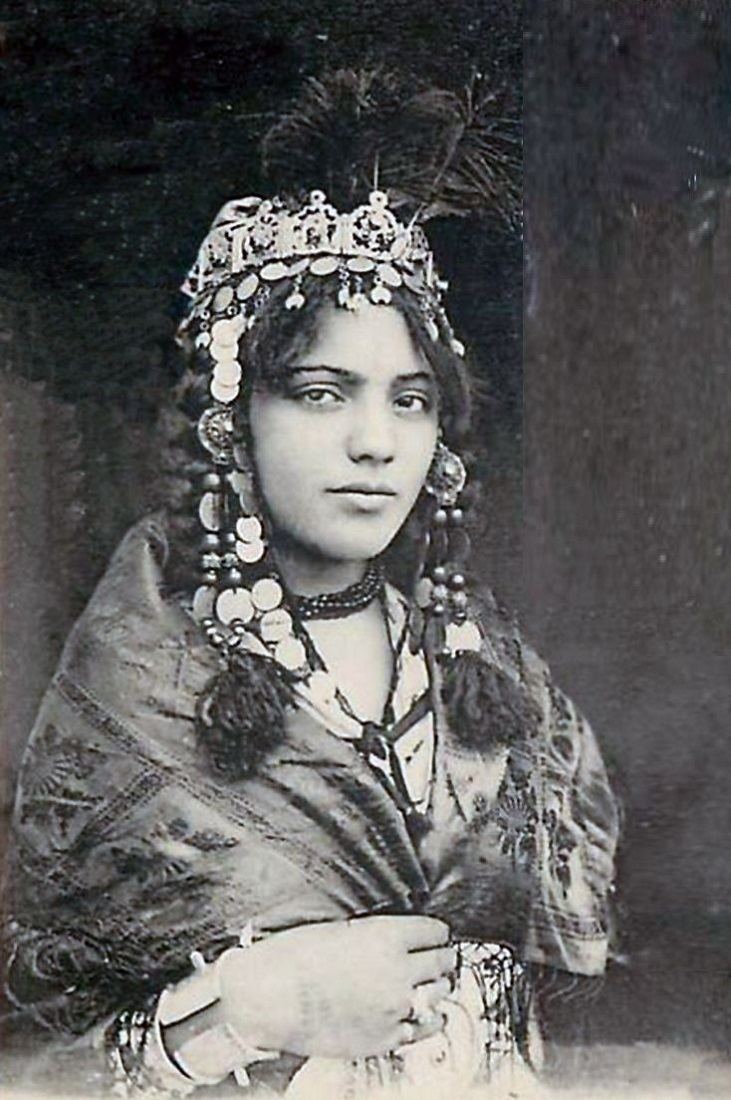
The Ouled Naïl tribe originated a style of music, sometimes known as Bou Saâda music after the town near their homeland. In belly dancing, the term refers to a style of dance originated by the Ouled Naïl, noted for their way of dancing.
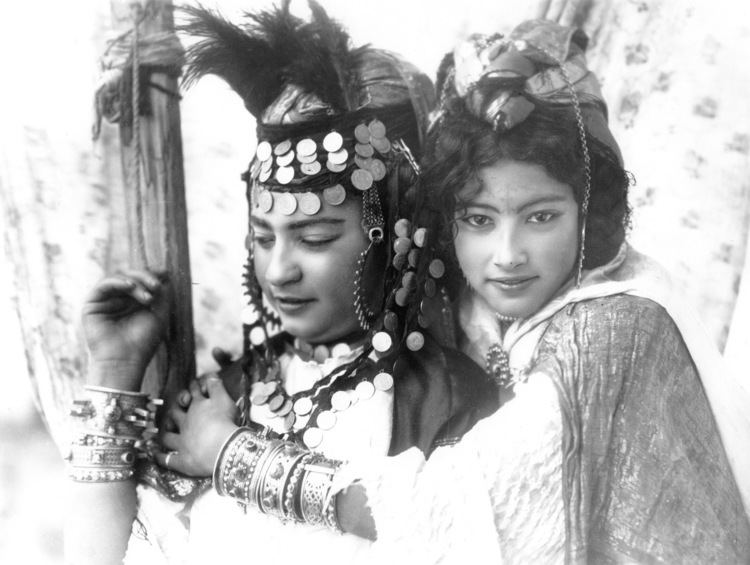
Although their primary roles and activities in their rural milieu were connected with animal farming, most women trained in the art of dance and song from childhood. Thus for Ouled Naïl females the practice of leaving their ancestral home and settling in a nearby desert town as entertainers was common. This was especially so in times of disaster and famine, when a woman had relative freedom to fend for herself in order to survive, save money and improve her future economic status.
The French war in Vietnam

In the Indochina War (1946-1954), the French used women from the Ouled Naïl in their Bordels militaires de campagne (military brothels).
"Exotic" representations
The 1956 edition of the Michelin Guide devotes only a few lines to the Ouled Naïl mountain region; Djelfa is not even mentioned and the Ouled Naïl people are "mere courtesans and Oriental dancers". French colonialist representations of the Ouled Naïl concentrated almost exclusively on women who temporarily left their home and settled in some nearby town. However, none of the highland tribes to which they belonged were specialised in prostitution and only some Ouled Naïl women became dancers. Still, the exuberance of their ornaments and the exoticism of their costumes added to the general fascination.
Auguste Maure, an orientalist photographer that lived in Biskra was active from 1860 to 1907 and took many photographs of landscapes and cities of south Algeria (El Kantara, Sidi Okba, Chetma, Tilatou, Tolga, Touggourt). The female members of the Ouled Naïl tribe, wearing the traditional colorful costumes and covered by jewels, were often represented on Maure photographs which were appreciated by tourists.
